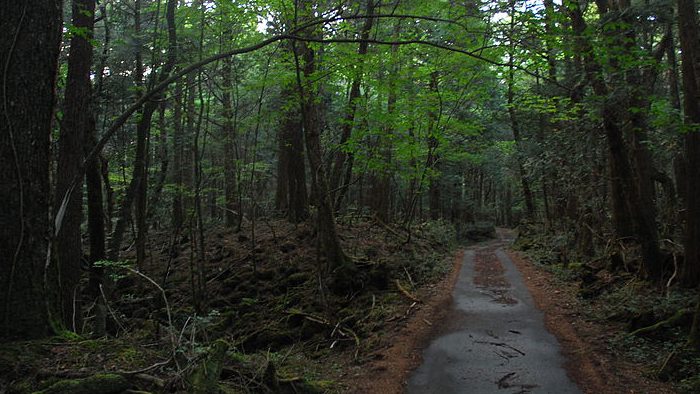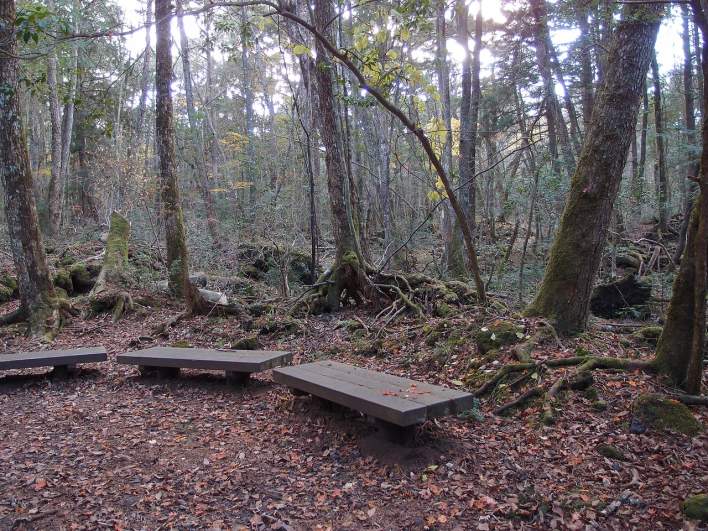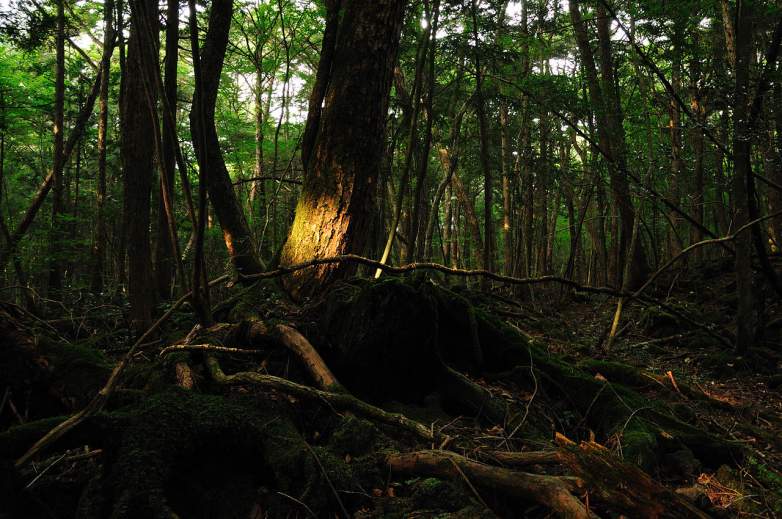
Wikimedia Commons The Aokigahara "suicide" forest.
Aokigahara Forest in Japan, often described as both ethereal and foreboding, has earned the dubious label of the “suicide forest” because so many people have taken their lives in the woods there.
The forest has been called “the perfect place to die,” because it has the “unfortunate distinction of the world’s second most popular place to take one’s life,” reports Atlas Obscura. The Golden Gate Bridge is first, the site notes.
Logan Paul, a prominent YouTube star, drove attention to the sinister forest when he posted a video showing him finding a dead body inside it. That has a lot of people wondering what the Aokigahara forest is, and why it’s called the “suicide forest.”
Here’s what you need to know:
1. YouTuber Logan Paul Has Apologized for Filming a Dead Body in the Forest

GettyLogan Paul.
Paul sparked a storm of criticism when he uploaded a 15-minute video to Youtube that showed him stumbling upon a suicide victim. The video in question was filmed during Paul’s trip to Japan to the Aokigahara forest. You can learn more about the video here.
Paul tweeted out an apology after criticism ensued. “This is a first for me. I’ve never faced criticism like this before, because I’ve never made a mistake like this before,” he wrote. “I’m surrounded by good people and believe I make good decisions, but I’m still a human being. I can be wrong.”
He insisted, “I didn’t do it for views. I get views. I did it because I thought I could make a positive ripple on the Internet, not cause a monsoon of negativity. That’s never the intention. I intended to raise awareness for suicide and suicide prevention…” You can read the entire apology above.
2. Hundreds of Japanese Businessmen Have Killed Themselves in the Forest

Aokigahara suicide forest.
How many people have committed suicide in the forest? Hundreds of them, estimates say. The forest is said to be filled with people’s discarded belongings.
“Since the 1950s, Japanese businessmen have wandered in, and at least 500 of them haven’t wandered out, at an increasing rate of between 10 and 30 per year. Recently these numbers have increased even more, with a record 78 suicides in 2002. In 2003, that record was beat with a number of 105 bodies discovered,” reported Atlas Obscura.
The site reports that the corpses are usually discovered by volunteers. “Annually about 70 corpses are found by volunteers who clean the woods, but many are forever lost in the very thick woods. Japanese authorities discontinued publishing exact suicide numbers in order to avoid making the place even more popular,” according to Atlas Obscura.
There are even more suicide attempts. “…bodies are frequently discovered in monthly sweeps coordinated by the police and local volunteer firemen,” reports Japan Times. “As they move around the forest, these searchers leave color-coded plastic tapes strung between trees to mark where they have searched and where they have found items or bodies — or sometimes simply to mark their way back out of this sylvan maze.”
According to Japan Times, “police records show that 247 people made suicide attempts in the forest in 2010 — 54 of them successfully.”
3. The Forest’s Foliage Is So Thick It’s Called the ‘Sea of Trees’
The Aokigahara forest is also known as the “Sea of Trees” due to its thick foliage, according to Mental Floss. It’s 13.5 square miles of forest located near Mount Fiji in Japan. The Japanese word is “Jukai.”
“The ground below is uneven and riddled with small caves, moss-covered roots growing on top of the dried lava that once flowed there. The soil has a high iron content which interferes with GPS and cell phone signals,” National Geographic reports.
According to Mental Floss, the forest’s physicality renders it creepy. “Bad reputation aside, this is no place for a leisurely stroll. The forest’s trees organically twist and turn, their roots winding across the forest floor in treacherous threads. Because of its location at the base of a mountain, the ground is uneven, rocky, and perforated with hundreds of caves,” reported Mental Floss.
4. Myths Hold That the Forest Is Haunted, So Some Locals Won’t Enter It

A scene from the suicide forest.
The forest is “less than 100 miles west of Tokyo,” but many Japanese choose to avoid it because of the myths and legends that emanate from it, including that it’s haunted, according to AokigaharaForest.com.
“The Aokigahara is considered to be haunted by demons in Japanese mythology,” the site reported, adding that it’s easy to get lost in its dense foliage. “According to some Japanese spiritualists, the trees themselves soaked in themselves a malevolent energy accumulated over centuries,” the site reports.
According to National Geographic, officials have taken measures to discourage suicides in the forest. “Signs at the forest entrances remind visitors that their lives are precious, to think of their families. At the bottom of the signs is the number for a suicide hotline,” the magazine notes. However, they don’t appear to be working.
5. Japan Has a Very High Suicide Rate & Legend Traces the Forest’s Notoriety to a Book About Lovers Committing Suicide

The suicide forest.
Statistics show that Japan has a very high suicide rate. In 2011, Japan Times reported that “according to World Health Organization data, the suicide rate in Japan is 25.8 per 100,000 people — the highest among developed nations, and more than double that of the United States.”
According to Tofugu.com, “Legend has it this all started after Seicho Matsumoto published a novel by the name of Kuroi Kaiju (Black Sea of Trees) in 1960. The story ends with two lovers committing suicide in the forest, so many people believe that’s what started it all. However, the history of suicide in Aokigahara predates the novel…”
According to National Geographic, that’s not the only book to feature the forest; The Complete Manual of Suicide, by Wataru Tsurumi, “named the forest as a perfect place to die,” the magazine reports.
Suicides in the forest tend to involve people hanging themselves from trees, the site reports, noting that the forest is Japan’s most notorious.


